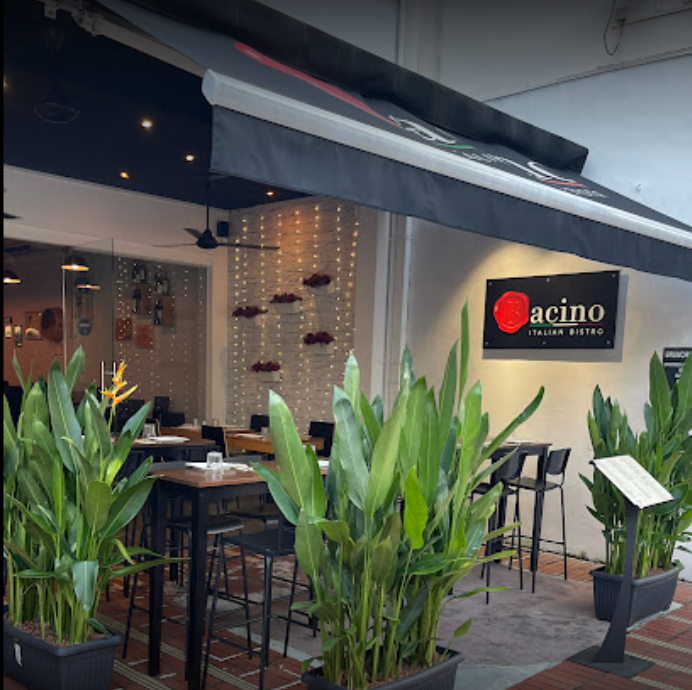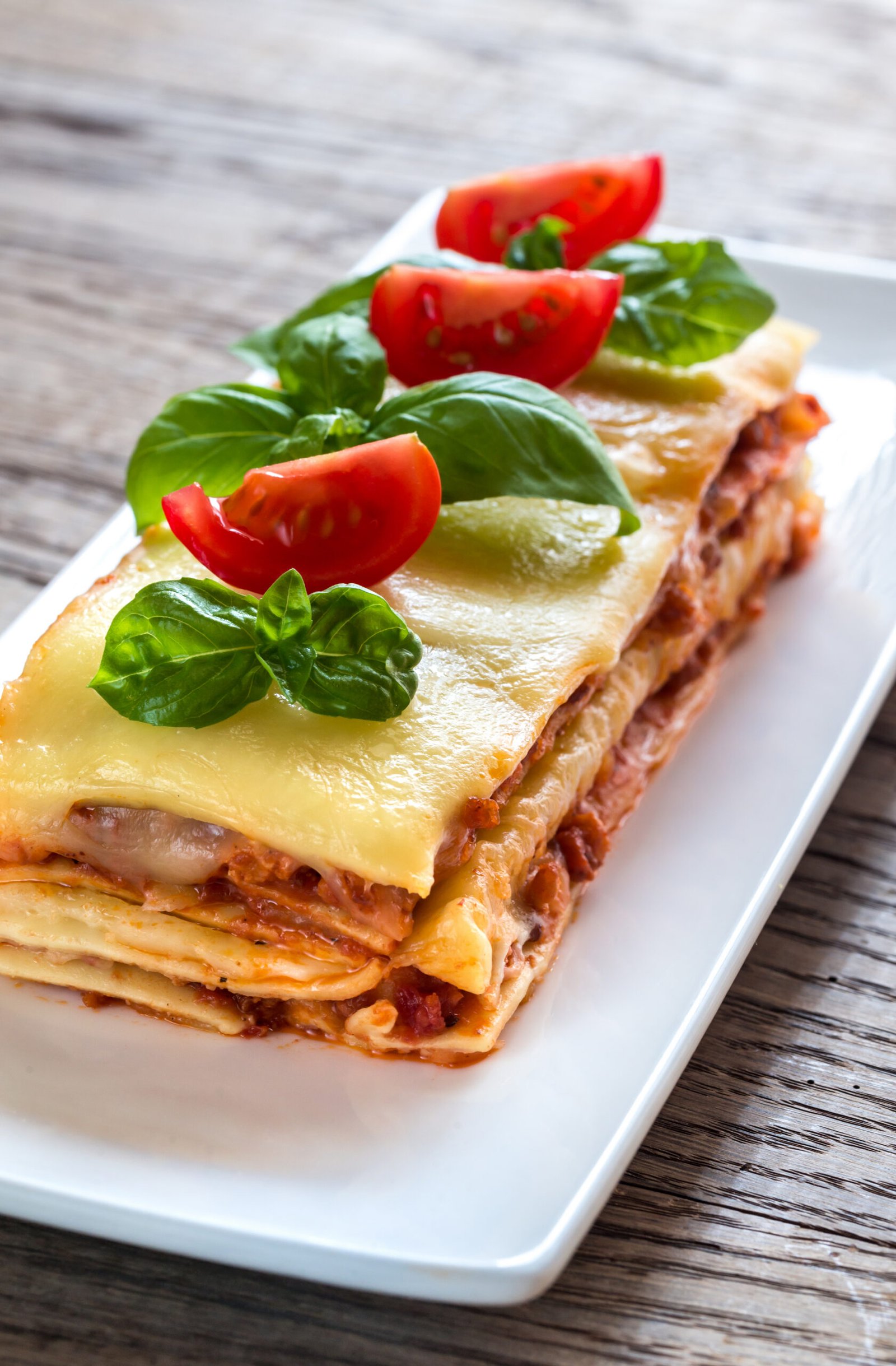Introduction
Italian cuisine has charmed taste buds worldwide. From the bustling streets of Rome to cozy family kitchens in New York, everyone seems to have a soft spot for Italian food. It’s not just about pizza and pasta; it’s the art of bringing simple, fresh ingredients together in a way that makes every bite a delight.
Mastering the techniques behind Italian cooking is like learning to paint with flavors. Whether you’re perfecting your al dente pasta or crafting a velvety risotto, these skills can turn a good meal into an unforgettable experience.
In this article, we’ll explore various Italian cooking techniques that can take your dishes to the next level. You’ll learn how to:
- Balance flavors and textures
- Showcase seasonal ingredients
- And much more!
We’ll even delve into some lesser-known aspects of Italian cooking, such as gluten-free pasta options that are gaining popularity for their health benefits and culinary versatility.
Ready to make your kitchen smell like an Italian bistro? Let’s get started!
1. Mastering the Three-Course Meal: A Beginner’s Guide
What is a Three-Course Meal?
In the world of Italian food, a three-course meal is like a symphony, with each course playing its part to create a wonderful dining experience. Traditionally, an Italian three-course meal consists of:
- Antipasto (Appetizer)
- Primo (First Course)
- Secondo (Second Course)
These courses are designed to take you on a journey from light and tantalizing appetizers to hearty main dishes that satisfy even the most insatiable appetites.
1.1 Planning and Executing a Memorable Three-Course Meal
Creating a memorable three-course meal involves more than just following recipes—it’s about balancing flavors, textures, and presentation. Let’s break it down into manageable chunks.
a) Tips for Planning a Well-Balanced Menu
- Variety is Key: Make sure each course offers something unique. If your antipasto features tangy flavors, consider a more savory primo.
- Seasonality Matters: Use fresh, seasonal ingredients for the best flavors and nutritional value.
- Dietary Needs: Keep in mind any dietary restrictions your guests may have. Offering vegetarian or gluten-free options can make your meal inclusive.
b) Essential Tools and Equipment for Serving Three Courses with Ease
Setting up your kitchen and dining area properly can make all the difference.
-
Proper Table Setting for Each Course: The elegance of your table setting sets the tone for the entire meal.
- Antipasto: Small plates or bowls.
- Primo: Pasta plates or shallow bowls.
- Secondo: Dinner plates.
-
Appropriate Serving Utensils and Dishware:
- Antipasto: Tongs or small serving spoons.
- Primo: Pasta forks or risotto spoons.
- Secondo: Carving knives for meats or fish spatulas.
Remember, in Italian dining culture, presentation is half the battle won. A beautifully set table can make even simple dishes feel special.
1.1 Planning and Executing a Memorable Three-Course Meal
Planning and executing a three-course meal might sound daunting at first, but with a bit of strategy, you can create a dining experience that even Nonna would approve of. Let’s break it down into bite-sized pieces.
Tips for Planning a Well-Balanced Menu
Creating a well-balanced menu involves more than just picking your favorite recipes. Here are some key considerations:
Balancing Flavors, Textures, and Overall Heaviness
- Think about contrasting flavors: tangy vs. sweet, spicy vs. mild.
- Mix up the textures: creamy soups, crunchy salads, tender meats.
- Avoid making all courses too heavy; mix light dishes with richer ones to keep your guests from feeling stuffed.
Considering Dietary Restrictions and Preferences
- Ask your guests about any allergies or dietary restrictions ahead of time.
- Have some vegetarian or gluten-free options ready; Italian cuisine is versatile enough to accommodate most needs.
Pro tip: Use seasonal ingredients to make your dishes shine. Nothing says “authentic” like fresh tomatoes in summer or hearty squash in the fall.
Essential Tools and Equipment for Serving Three Courses with Ease
Once the menu is set, having the right tools will make execution smoother than olive oil on focaccia.
Proper Table Setting for Each Course
- Start with an elegant yet simple setup: fork on the left, knife on the right, and wine glasses where they belong (everywhere!).
- Swap out utensils between courses to keep things clean and classy.
Appropriate Serving Utensils and Dishware
- Antipasti: Small plates or platters work best for those delicious little bites.
- Primi Piatti: Bowls for pasta or risotto—make sure they’re deep enough to hold all that saucy goodness.
- Secondi: Larger plates for meat or fish dishes, paired with appropriate knives for cutting through that perfectly seared crust.
Here’s a fun fact: Italians often use separate glasses for red and white wine during their meals. You don’t have to be this strict, but it does add an extra touch of sophistication.
By paying attention to these details, you ensure that each course not only tastes amazing but also looks fantastic as it’s served. This sets the stage for an unforgettable dining experience.
2. Secrets to Crafting Three-Course Meals with Wow Factor
2.1 Balancing Flavors and Textures in Italian Dishes
Italian cuisine is a masterclass in the art of balance. When it comes to crafting three-course meals that leave an impression, understanding how to balance flavors and textures is key.
Contrast in Flavor Profiles
Imagine biting into a Caprese salad. The tangy tomatoes paired with creamy mozzarella create a harmonious dance in your mouth. This contrast isn’t accidental; it’s a deliberate choice that elevates the dish. Here are some classic pairings you can try:
- Sweet and Savory: Think about prosciutto wrapped around sweet melon or figs.
- Tangy and Creamy: The classic combination of balsamic vinegar drizzled over soft burrata cheese.
- Bitter and Sweet: Arugula’s peppery bitterness balanced by the sweetness of roasted beets.
Layering Textures
Texture plays just as significant a role as flavor in Italian cooking. A well-crafted dish should have a variety of textures to keep each bite interesting. Consider these techniques:
- Layering: Take lasagna, for example. It’s not just about the rich flavors but also the alternating layers of tender pasta, creamy béchamel, and hearty meat sauce.
- Incorporating Crunch: Adding toasted breadcrumbs on top of pasta dishes like “Pasta al Forno” introduces a delightful crunch that contrasts with the soft pasta.
- Silky and Crisp: A classic example is “Risotto alla Milanese,” where the creamy risotto can be served alongside crispy fried onions for added texture.
Practical Tips for Balancing Flavors and Textures
Balancing flavors and textures might sound daunting, but with these practical tips, you’ll be on your way to creating unforgettable Italian dishes:
- Start with Quality Ingredients:
- Fresh produce not only tastes better but often has more vibrant textures.
- Visit local markets for seasonal ingredients that are at their peak.
- Taste as You Go:
- Adjust seasonings gradually. Italian cooking emphasizes tasting during different stages to ensure every flavor shines.
- Experiment with Textural Elements:
- Think beyond the main components of your dish. Could you add nuts, seeds, or crusty bread to enhance texture?
- Embrace Acidity:
- A squeeze of lemon or splash of vinegar can brighten flavors and add an essential contrast to rich dishes.
- Don’t Overlook Garnishes:
- Fresh herbs like basil or parsley aren’t just for decoration—they add both flavor and texture.
Using these techniques ensures each course remains exciting from start to finish, making your three-course meal not only delicious but memorable.
2.2 Showcasing Seasonality through Ingredients
Have you ever wondered why an Italian dish tastes so good? The secret lies in the fresh, seasonal ingredients they use. Italians are experts at using what’s currently in season, which makes every bite burst with flavors and colors.
Why Seasonality Matters
- Flavor: Ingredients that are in season taste better naturally. Just imagine biting into a juicy tomato that has been ripened by the sun or enjoying basil that was picked just a few hours ago.
- Nutrition: Fresh, seasonal produce is also more nutritious compared to those that have been stored for a long time. So not only will your taste buds be happy, but your body will thank you too.
- Visual Appeal: Using colorful and vibrant ingredients can make your dishes look as good as they taste.
Tips for Incorporating Seasonal Ingredients
- Visit Local Markets: Take some time to explore your local farmers’ market. You’ll have a higher chance of finding the best seasonal produce there.
- Plan Your Menu Around What’s Available: Instead of deciding on a menu first and then going shopping, try doing it the other way around. See what looks fresh and delicious at the market, then plan your meal based on those items.
- Preserve When Possible: If there’s a particular ingredient that you love and it’s only available during a certain season, consider preserving it for later use. For example, you can make homemade tomato sauce using fresh summer tomatoes and store it in jars to enjoy during the winter months.
Examples of Seasonal Pairings
- Spring: Indulge in a creamy asparagus risotto topped with lemon zest and shaved Parmesan.
- Summer: Enjoy the classic Caprese salad with juicy heirloom tomatoes, creamy fresh mozzarella, and aromatic basil leaves.
- Autumn: Delight in the flavors of fall with butternut squash ravioli drizzled with sage-infused brown butter.
- Winter: Warm up with a comforting bowl of rich mushroom risotto made with earthy porcini mushrooms.
“The simplest ingredients often create the most memorable dishes.” – Some Italian Nonna Somewhere
A Note on Herbs
Fresh herbs can truly transform a dish. Whether it’s using basil during the summer or rosemary in the winter, these small green wonders add depth and complexity to any recipe. Whenever possible, choose fresh herbs over dried ones as they have a more vibrant flavor.
By focusing on using seasonal ingredients, you not only enhance the taste of your cooking but also develop a deeper connection with nature’s cycle. Each meal becomes an opportunity to savor and appreciate the bounties of each season.
3. Elevating Each Course: Techniques for Success
3.1 First Impressions Matter: Creating Stunning Antipasti
Antipasti sets the stage for the entire meal, and it’s all about making a statement right from the start. Vibrant colors, delicate flavors, and an eye-catching presentation are key.
The Importance of Vibrant Colors and Delicate Flavors
When creating antipasti, think of your plate as a painter’s canvas. The colors should pop, and the flavors should intrigue without overwhelming.
- Colorful Vegetables: Use a mix of bright bell peppers, cherry tomatoes, radishes, and leafy greens to create visual interest.
- Delicate Flavors: Incorporate ingredients like thinly sliced prosciutto, marinated olives, and mild cheeses such as mozzarella or burrata.
Here’s a fun fact: The term “antipasto” literally means “before the meal,” setting the tone for what’s to come in a delicious way.
Example Technique: Quick Pickling for Added Brightness
Quick pickling is a fantastic technique to add both brightness and acidity to your antipasti platter. It’s like turning regular veggies into flavor-packed stars in just minutes.
Quick Pickling Recipe:
- Ingredients:
- 1 cup water
- 1 cup white vinegar
- 2 tablespoons sugar
- 1 tablespoon salt
- Sliced vegetables (cucumbers, carrots, red onions)
- Instructions:
- Combine water, vinegar, sugar, and salt in a saucepan.
- Bring to a boil until sugar and salt dissolve.
- Pour the hot brine over your sliced vegetables in a jar.
- Let it cool to room temperature before refrigerating for at least an hour.
Pickled vegetables not only add that tangy zing but also enhance the overall complexity of your antipasti selection.
Presentation Tips for Antipasti
A visually appealing antipasti platter can make even the simplest ingredients look gourmet. Here are some tips:
- Use Different Heights: Stack cheeses or use small bowls for dips to create layers.
- Garnish with Herbs: Fresh basil or parsley can add a touch of green and fresh aroma.
- Variety is Key: Mix textures – think crunchy breadsticks paired with soft cheeses.
Antipasti isn’t just about taste; it’s about engaging all senses right from the get-go.
3.2 Perfecting Primi Piatti: Mastering Pasta and Risotto Skills
To make your Italian dishes stand out, it’s important to use impeccable techniques when preparing them. In this section, we’ll focus on two iconic Italian dishes: pasta and risotto. These dishes are known as “Primi Piatti” or first courses in Italian cuisine. Here are some secrets to mastering them:
Techniques for Pasta
Pasta is a staple in Italian cooking, and getting the texture just right is crucial, whether you prefer spaghetti, fettuccine, or penne.
Signature Dish Example: Tagliatelle al Ragù (Bolognese)
Tagliatelle served with a rich meat sauce is a classic Italian dish that perfectly highlights the beauty of handmade pasta. Here’s how you can recreate it at home:
- Handmade Pasta Shaping Methods: Rolling out pasta dough to the ideal thickness (typically around 1mm) ensures even cooking. Use a pasta machine or a trusty rolling pin.
- Achieving the Ideal Al Dente Texture: Cook fresh tagliatelle in salted boiling water for about 2-3 minutes until it’s firm to the bite. Dry pasta may take longer, around 8-10 minutes.
- Sauce Pairing: Tossing the cooked pasta directly in the ragù allows the noodles to soak up all those delicious flavors.
Fun Fact: The term “al dente” literally means “to the tooth.” It refers to pasta that is cooked just enough to retain a firm texture when bitten. It’s like Goldilocks’ porridge – not too soft, not too hard, but just right!
Techniques for Risotto
Risotto is another beloved Italian dish that requires time, patience, and attention to detail. Its creamy consistency and rich flavors have made it a favorite on many menus.
Signature Dish Example: Risotto alla Milanese
This classic Milanese dish is known for its vibrant yellow color, which comes from the addition of saffron. Here’s how you can make the perfect risotto at home:
- Gradual Addition of Broth: Start by sautéing onions in butter until translucent. Add Arborio rice and toast it for extra nuttiness before deglazing with white wine. Gradually add warm broth one ladle at a time, stirring constantly until absorbed.
- Toasting Rice Grains: Toasting the rice grains in butter before cooking them helps enhance their flavor and gives the risotto a more complex taste.
- Creamy Finish: Before serving, stir in grated Parmesan cheese and a knob of butter to create a luscious, creamy texture.
Fun Fact: Did you know that stirring risotto can be quite therapeutic? While it does require constant attention, many people find the repetitive motion soothing and calming.
By mastering these techniques, you’ll be able to take your pasta and risotto dishes from ordinary to extraordinary. Whether you’re aiming for perfectly shaped tagliatelle or a velvety smooth risotto, remember that practice is key – or as Italians say, la pratica rende perfetti.
3.3 Secondi Secrets: Searing, Roasting, and Braising for Flavorful Mains
When it comes to secondi (main courses) in Italian cuisine, the techniques of searing, roasting, and braising are essential. These methods can transform a basic piece of meat or fish into a memorable culinary delight. Let’s explore these techniques further with some classic dishes that will take your cooking skills to the next level.
Searing: The Art of Creating a Golden Crust
Creating that perfect golden crust on meats is like achieving a suntan without the sunscreen—tricky but oh-so-rewarding!
Example Technique: Pan-Seared Chicken Breast
- Preheat your pan: A hot pan is essential. You want it screaming hot before you even think about adding that chicken breast.
- Oil wisely: Use a high-smoke-point oil like grapeseed or canola oil.
- Pat it dry: Any moisture on the chicken will steam instead of sear it. And we don’t want a soggy chicken sauna!
- Season generously: Salt and pepper are your best friends here.
- Sear undisturbed: Place the chicken in the pan and let it be. Avoid the temptation to poke or flip it too soon; give it around 5-7 minutes on each side.
The result? A beautifully golden, crispy exterior with juicy, tender meat inside. Voilà!
Roasting: Bringing Out Deep Flavors
Roasting might seem straightforward, but there’s an art to coaxing those deep, caramelized flavors out of your ingredients.
Example Technique: Herb-Roasted Pork Loin
- Marinate ahead of time: Rub the pork loin with a mixture of olive oil, garlic, rosemary, thyme, and lemon zest at least a few hours before cooking.
- Preheat properly: A hot oven (around 400°F/200°C) helps to start the caramelization process right away.
- Use a rack: Elevate the pork loin on a roasting rack so that heat circulates evenly.
- Baste occasionally: Drizzle some of its own juices over the top every 20 minutes to keep it moist.
This technique turns your pork loin into a flavor-packed centerpiece that’s both visually stunning and deliciously aromatic.
Braising: Slow-Cooked Perfection
If patience is your virtue, then braising should be your go-to technique. Slow-cooking tough cuts of meat until they’re melt-in-your-mouth tender is nothing short of magical.
Example Technique: Braised Beef Osso Buco
- Brown first: Sear the beef shanks in a heavy-bottomed pot with some olive oil until they develop a rich brown color.
- Build flavors: Sauté onions, carrots, celery, and garlic in the same pot to soak up those browned bits.
- Deglaze with wine: Add white wine and let it simmer until reduced by half.
- Low and slow: Add beef broth and tomatoes, bring to a boil, then lower to a simmer. Cover and let it cook gently for about 2 hours.
By the end of this process, you’ll have fall-off-the-bone beef bathed in a luxurious sauce that’s perfect for spooning over polenta or risotto.
Mastering these techniques is key to creating exceptional Italian dishes. Whether you’re searing, roasting, or braising, remember to:
- Use high-quality ingredients
- Pay attention to cooking times and temperatures
- Season generously with herbs and spices
- Let the flavors develop through proper resting or marinating
Elevating each course through thoughtful techniques makes all the difference in Italian cooking. Whether you’re mastering antipasti or perfecting secondi, these methods ensure every dish shines on its own merits while harmonizing with others for an unforgettable dining experience.
4. The Finale: Unforgettable Dolci
4.1 Choosing the Perfect Ending: Principles of Dessert Pairing
When it comes to crafting the perfect Italian meal, dolci—that’s desserts for us non-Italian speakers!—are the grand finale that leaves a lasting impression. The art of pairing these sweet treats with complementary wines or after-dinner drinks can elevate your dessert game to new heights.
Harmony Between Flavors and Textures
Italian desserts are renowned for their balance of flavors and textures. Consider the legendary Tiramisu: creamy mascarpone, rich espresso-soaked ladyfingers, and a dusting of cocoa powder. This dessert is a tapestry of flavors—bittersweet coffee, lush cream, and a hint of chocolate—that meld together seamlessly.
Pairing options:
- Vin Santo: An Italian dessert wine that’s sweet but not overly so, making it an ideal companion to Tiramisu.
- Espresso: For those who prefer something non-alcoholic yet equally traditional.
Another example is Panna Cotta, which translates to “cooked cream” and is essentially a luscious custard that’s often paired with fresh berries or a berry coulis.
Pairing options:
- Prosecco: Its slight fizz and light sweetness can cut through the richness of the Panna Cotta.
- Limoncello: A zesty lemon liqueur that offers a refreshing contrast to the creamy texture.
Tips for Successful Dessert Pairing
-
Complement or Contrast:
- Complementary pairings match similar flavors and textures. For instance, a rich chocolate cake with a robust red wine like an Amarone.
- Contrasting pairings create an exciting interplay of opposites, such as pairing a tangy lemon tart with a sweet Moscato d’Asti.
-
Balance Sweetness:
- Ensure your drink isn’t sweeter than your dessert to avoid overwhelming your palate. A lightly sweet Riesling works wonderfully with fruit-based desserts like Torta di Mele (apple cake).
-
Consider Texture:
- Match creamy desserts with crisp wines or drinks to introduce textural variety. Think about pairing a velvety Zabaglione with sparkling Prosecco.
Classic Italian Desserts and Pairings
Cannoli:
- Description: Crisp pastry shells filled with sweet ricotta.
- Pairing: Marsala wine—a fortified wine from Sicily that echoes the Sicilian roots of Cannoli.
Sfogliatelle:
- Description: Flaky pastry filled with ricotta and candied fruit.
- Pairing: Moscato d’Asti—a semi-sparkling white wine that complements the delicate sweetness.
Gelato:
- Description: Italian ice cream that’s denser and more flavorful than its American counterpart.
- Pairing: Frangelico—a hazelnut liqueur that adds depth without overpowering the gelato’s flavor.
Practical Tips for Serving Dolci
- Serve dessert wines slightly chilled to enhance their refreshing qualities.
- Use small, elegant glasses for after-dinner drinks to elevate the presentation.
- Don’t forget about garnishes; a sprig of mint or some fresh berries can add both visual appeal and additional layers of flavor.
A well-paired dessert not only wraps up your meal on a high note but also leaves your guests talking about it long after the plates have been cleared.
4.2 Exquisite Endings to Try
Italian desserts, or dolci, play a pivotal role in concluding a meal with a perfect balance of richness and lightness. Here are some classic Italian desserts that can elevate your three-course meal:
Tiramisu
Tiramisu literally means “pick me up,” and it truly lives up to its name! This iconic dessert is made with layers of coffee-soaked ladyfingers, mascarpone cheese, and cocoa powder. Key techniques include:
- Layering: Ensuring each layer is evenly soaked with coffee for balanced flavor.
- Whipping Mascarpone: Achieving a smooth, creamy texture without overbeating.
Panna Cotta
Translating to “cooked cream,” panna cotta is an elegant yet simple dessert. It features silky, sweetened cream set with gelatin, often accompanied by a berry compote or caramel sauce. Tips for perfection:
- Gelatin Blooming: Properly blooming the gelatin ensures a smooth set without lumps.
- Temperature Control: Avoiding boiling the cream prevents curdling and maintains the delicate texture.
Cannoli
Crispy pastry shells filled with sweet ricotta—what’s not to love? These Sicilian treats are adored worldwide. Essentials for making cannoli include:
- Shell Frying: Achieving the right crispiness without burning requires maintaining oil at the correct temperature.
- Ricotta Filling: Draining ricotta thoroughly removes excess moisture, resulting in a thicker filling.
Gelato
Not just any ice cream—gelato is denser and more intensely flavored than its American cousin. Crafting perfect gelato involves:
- Churning Speed: Slower churning incorporates less air, creating that signature dense texture.
- Flavor Infusion: Using fresh ingredients like vanilla beans or seasonal fruits enhances the natural flavors.
Zabaglione
This custard-like dessert is made from egg yolks, sugar, and Marsala wine. Often served warm, zabaglione can also be chilled for a different experience. Techniques to master:
- Double Boiler Method: Whisking over simmering water provides gentle heat to avoid scrambling the eggs.
- Continuous Whisking: Ensuring constant movement yields a smooth, airy consistency.
These delightful dolci offer something for every palate while showcasing the artful balance of flavors and textures in Italian cuisine. Experiment with these recipes to create memorable endings to your three-course meals.
Putting It All Together: Hosting a Memorable Italian Feast with Your Newly Acquired Skills
Embrace Creativity in Menu Design
Italian cuisine is all about passion and creativity. When putting together your own Italian-inspired menus, let your imagination run wild while staying true to the principles we’ve covered. Think about balancing flavors, textures, and colors. Maybe start with a vibrant caprese salad, move on to a rich mushroom risotto, and finish off with a silky panna cotta.
Mise en Place: The Secret to Seamless Cooking
Ever wondered how professional chefs make it look so easy? It’s all about mise en place—a fancy French term that means “everything in its place.” Before you start cooking:
- Prep all ingredients: Chop vegetables, measure spices, pre-cook components.
- Organize tools and utensils: Have everything you’ll need within arm’s reach.
- Set up stations: Designate areas for chopping, mixing, and cooking.
Workflow Tips for a Smooth Culinary Experience
To ensure a smooth experience when preparing your three-course meal at home:
- Plan ahead: Decide on your menu and gather ingredients a day or two in advance.
- Time management: Start with dishes that take the longest to cook or chill. Desserts like tiramisu can benefit from an overnight stay in the fridge.
- Clean as you go: Keep your workspace tidy to avoid chaos.
Channel your inner Italian chef, embrace these tips, and you’ll be hosting memorable feasts that leave everyone begging for more!
Conclusion
Mastering Italian cooking techniques can truly elevate your dining experience. By understanding the intricacies of creating a well-balanced three-course meal, balancing flavors and textures, and using fresh, seasonal ingredients, you bring a touch of authenticity and flair to your kitchen.
Italian Cooking Techniques aren’t just about following recipes; they involve embracing the art of combining ingredients thoughtfully and with passion. Here’s a quick recap of how you can make your dishes stand out:
- Vibrant Antipasti: Use colorful, fresh ingredients to create visually stunning starters.
- Perfect Primi Piatti: Master pasta and risotto by focusing on texture and flavor development.
- Flavorful Secondi: Employ searing, roasting, and braising for main courses that burst with taste.
- Delightful Dolci: Choose desserts that beautifully round off the meal.
Practicing these techniques with confidence allows you to explore the rich flavors of Italian cuisine in your own unique style. Have fun experimenting in the kitchen, share stories behind your dishes, and enjoy the process as much as the delicious results. Buon appetito!














































































